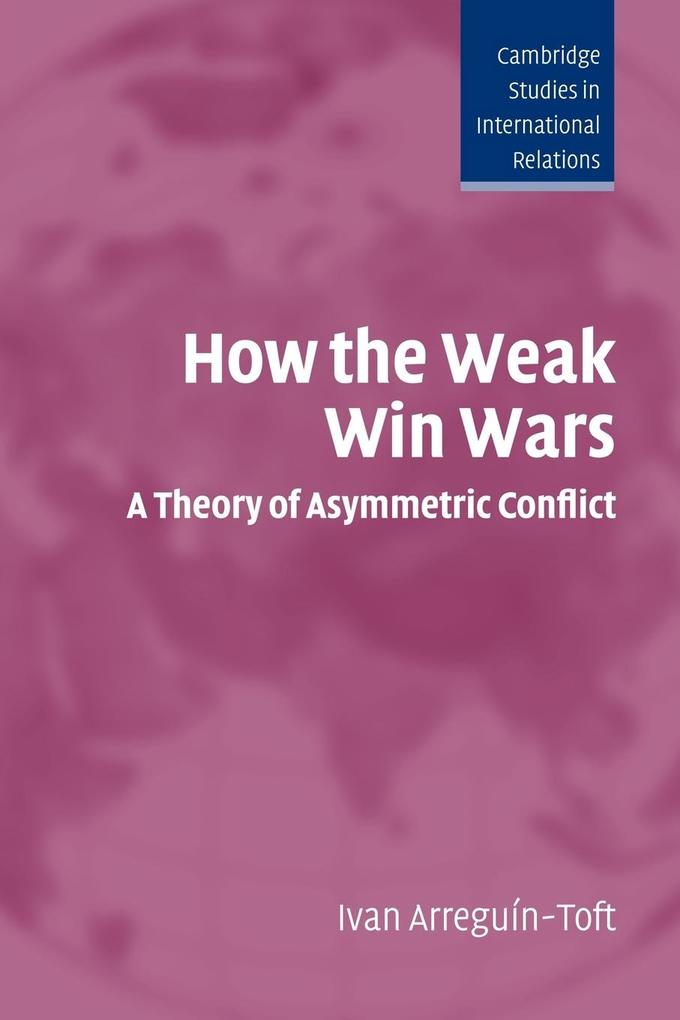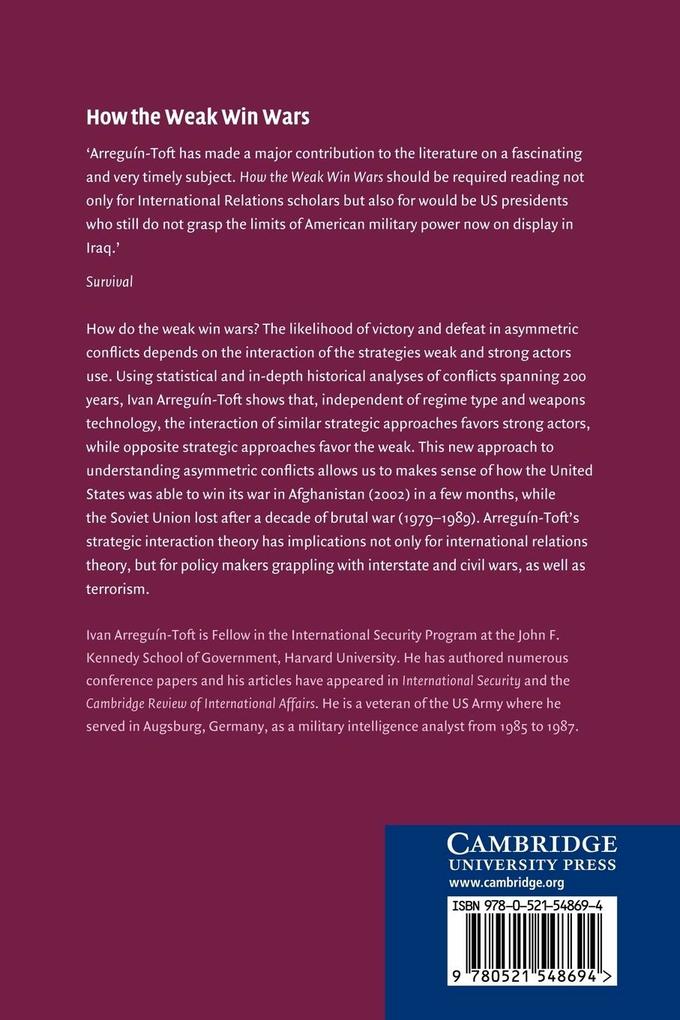
Zustellung: Sa, 19.07. - Mi, 23.07.
Versand in 5 Tagen
VersandkostenfreiIn this 2005 book, Ivan Arreguín-Toft examines the nature of asymmetric conflicts to explain how weaker powers can win.
How do the weak defeat the strong? In How the Weak Win Wars, Ivan Arreguín-Toft argues that although many factors affect asymmetric conflict outcomes (for example the relative power of the actors, their weapons technology, outside support), the interaction of each actors strategy is the best explanation. Supporting his argument with a combination of statistical and comparative case study analyses, Arreguín-Tofts strategic interaction theory has implications not only for international relations theory, but for policy makers grappling with interstate and civil wars, as well as terrorism.
Inhaltsverzeichnis
List of figures; Preface; Acknowledgements; List of abbreviations; 1. Introduction; 2. Explaining asymmetric conflict outcomes; 3. Russia in the Caucasus: the Murid War, 1830-59; 4. Britain in Orange Free State and Transvaal: the South African War, 1899-1902; 5. Italy in Ethiopia: the Italo-Ethiopian War, 1935-40; 6. The United States in Vietnam: the Vietnam War, 1965-73; 7. The USSR in Afghanistan: the Afghan Civil War, 1979-89; 8. Conclusion; Appendix; References; Index.
Produktdetails
Erscheinungsdatum
12. August 2005
Sprache
englisch
Seitenanzahl
274
Autor/Autorin
Ivan Arreguín-Toft
Verlag/Hersteller
Produktart
kartoniert
Gewicht
449 g
Größe (L/B/H)
229/152/17 mm
ISBN
9780521548694
Entdecken Sie mehr
Pressestimmen
'Arreguín-Toft has made a major contribution to the literature on a fascinating and very timely subject. How the Weak Win Wars should be required reading not only for International Relations scholars but also for would be US presidents who still do not grasp the limits of American military power now on display in Iraq.' Survival
Bewertungen
0 Bewertungen
Es wurden noch keine Bewertungen abgegeben. Schreiben Sie die erste Bewertung zu "How the Weak Win Wars" und helfen Sie damit anderen bei der Kaufentscheidung.









